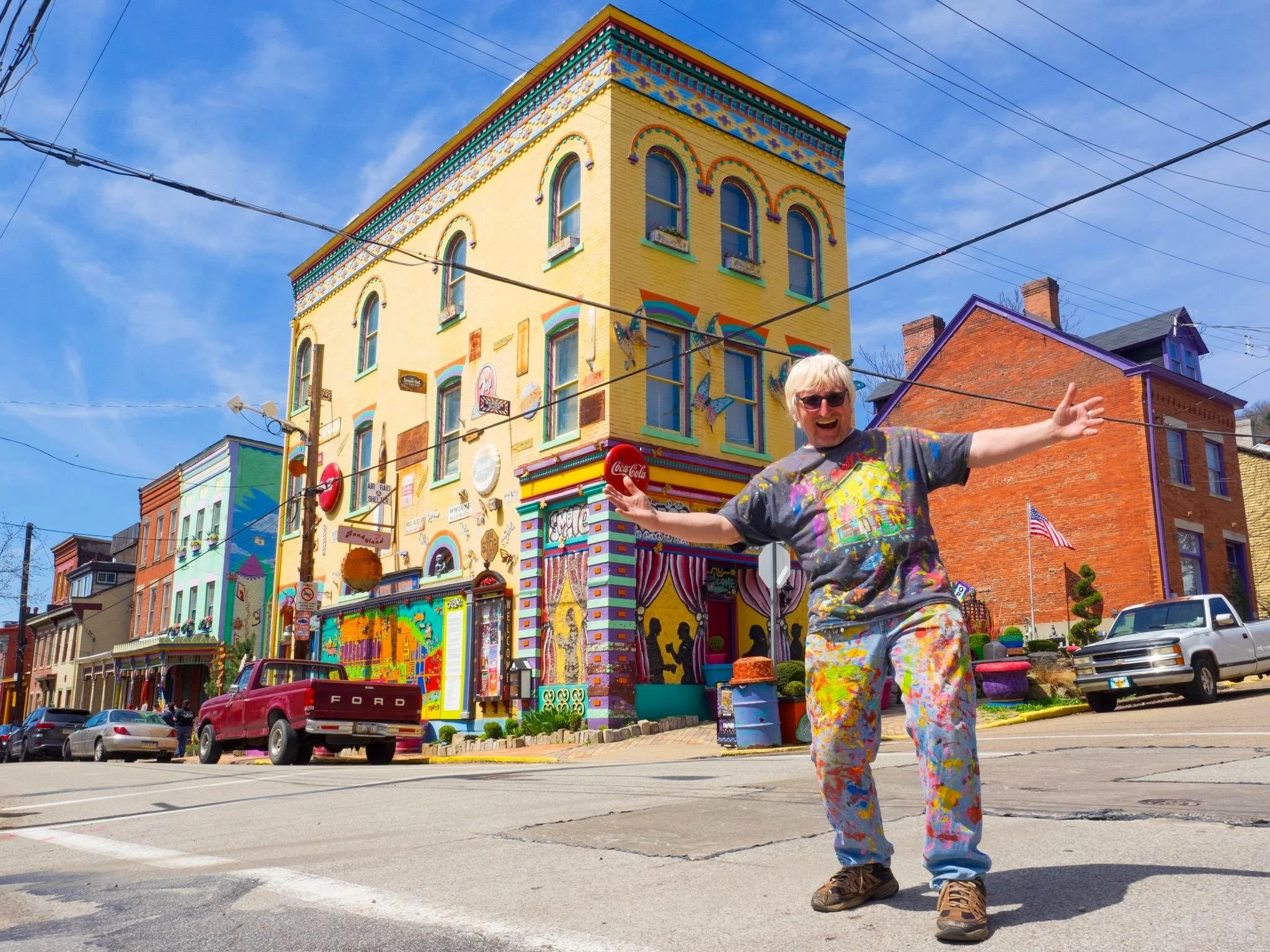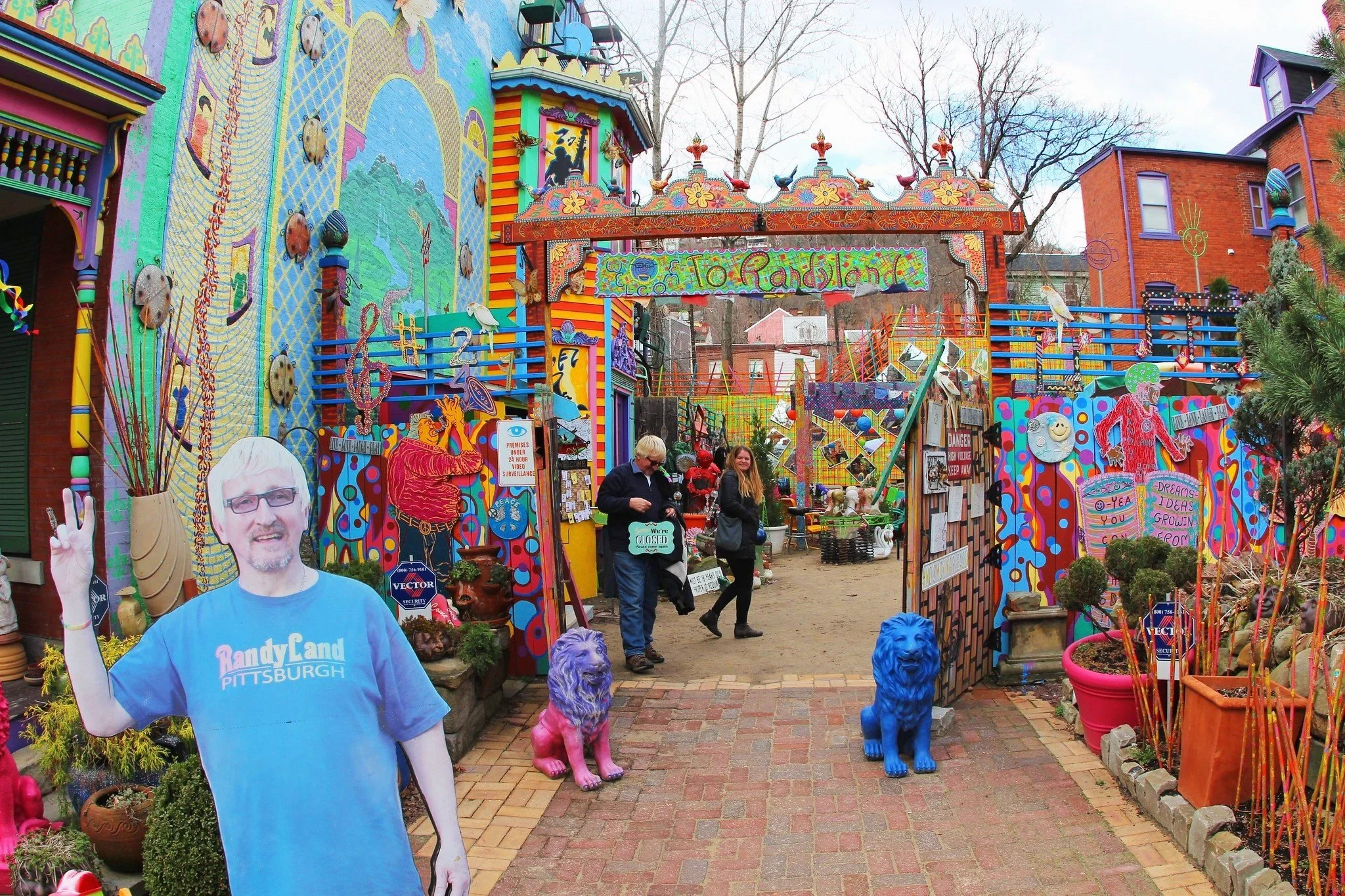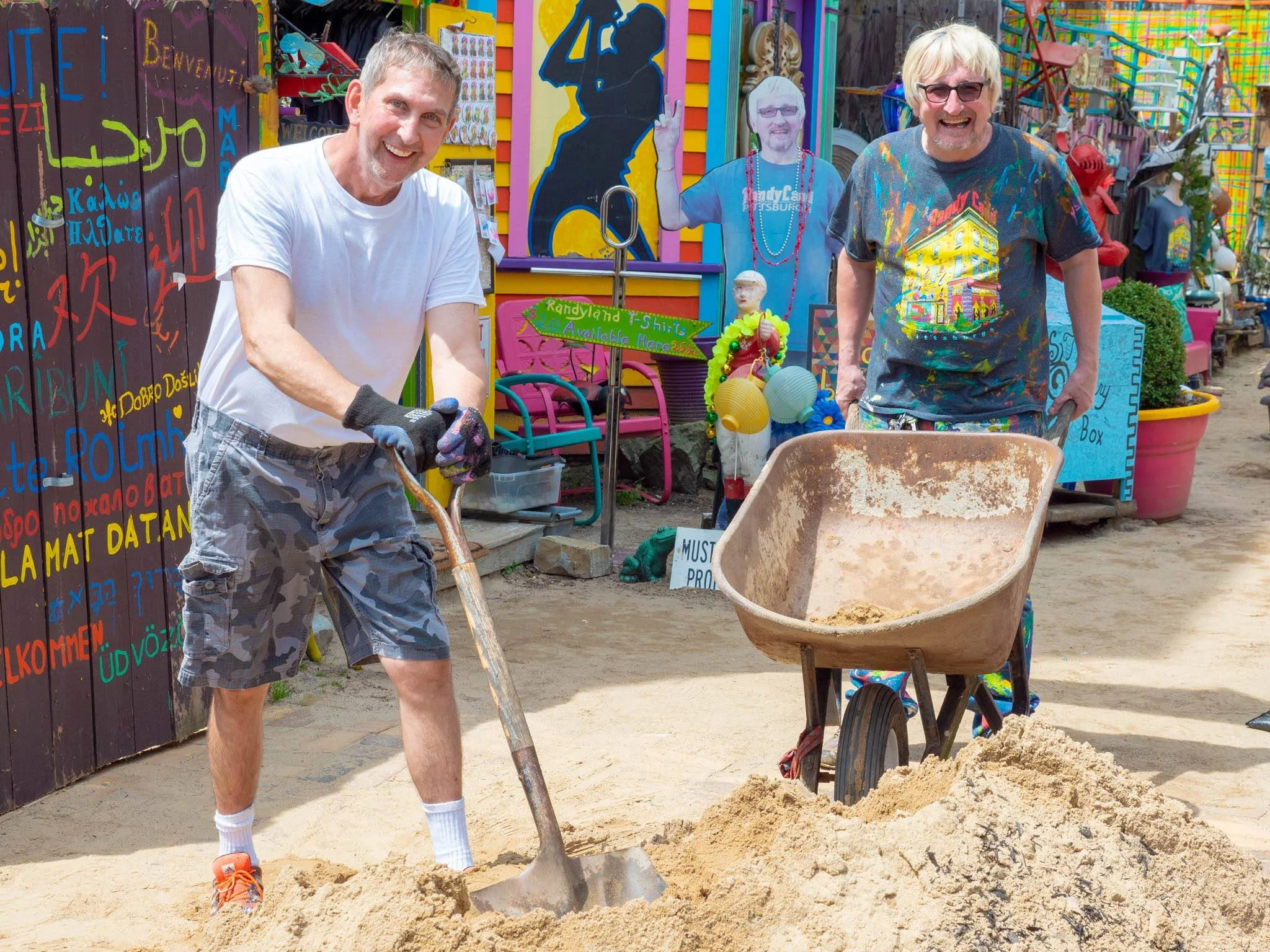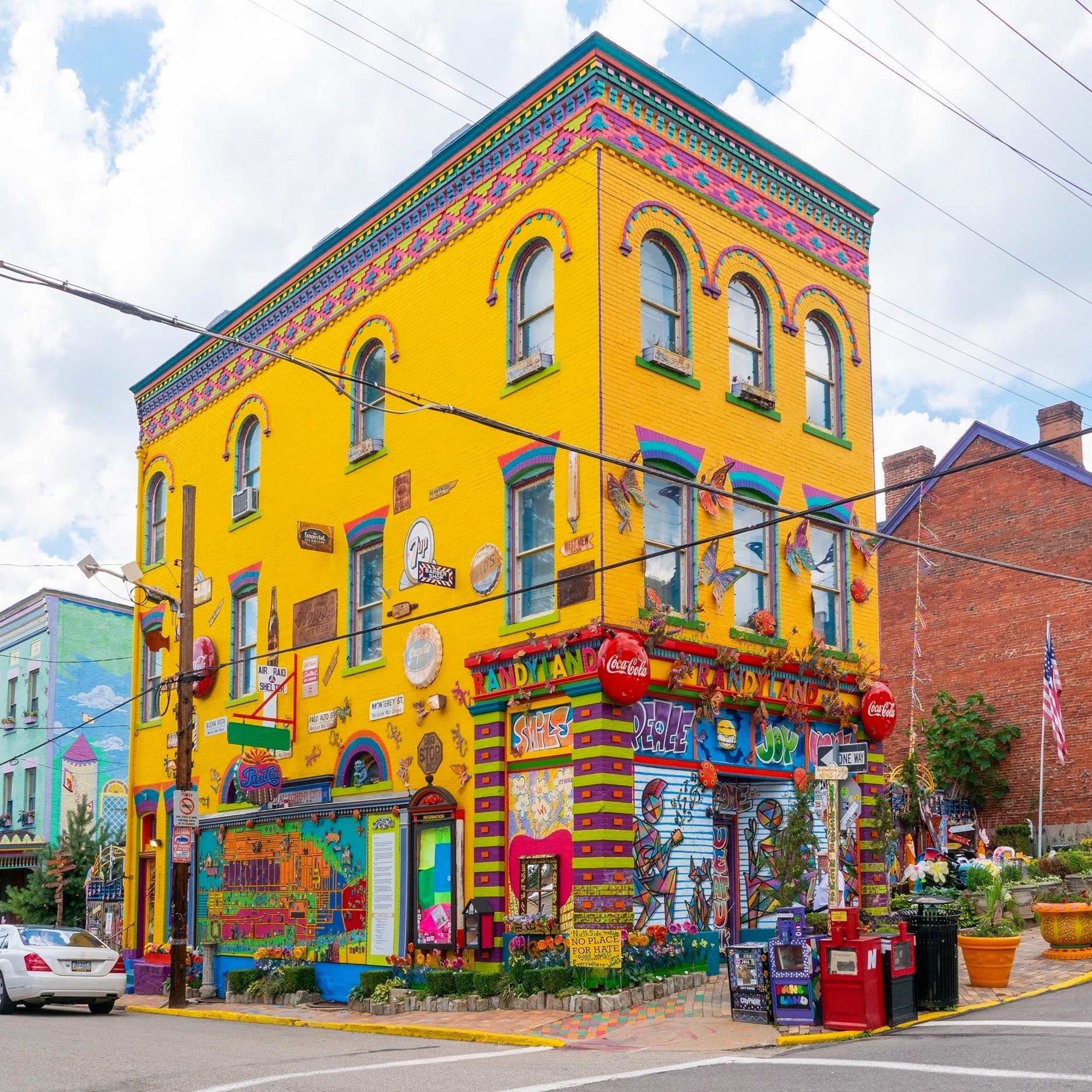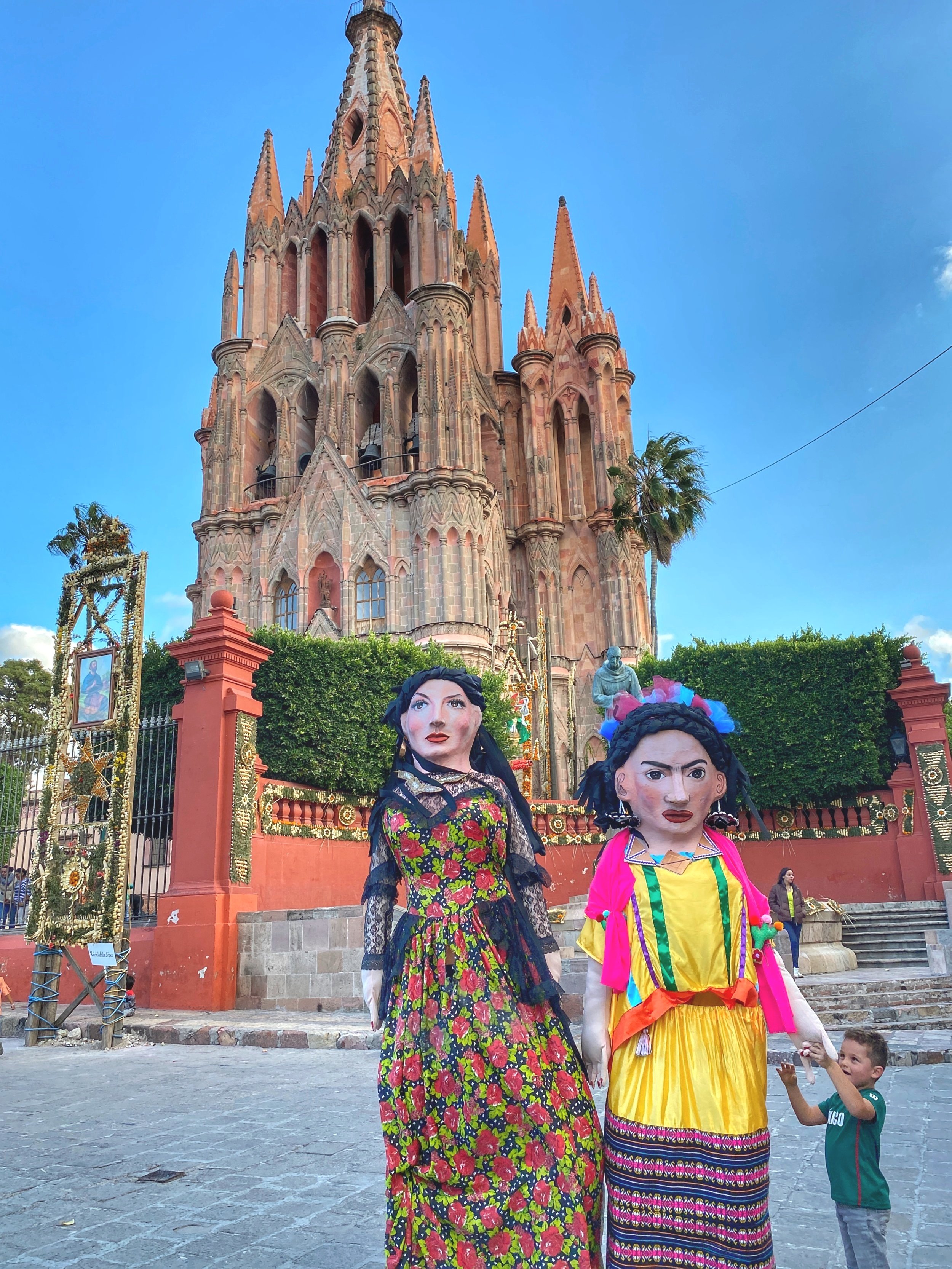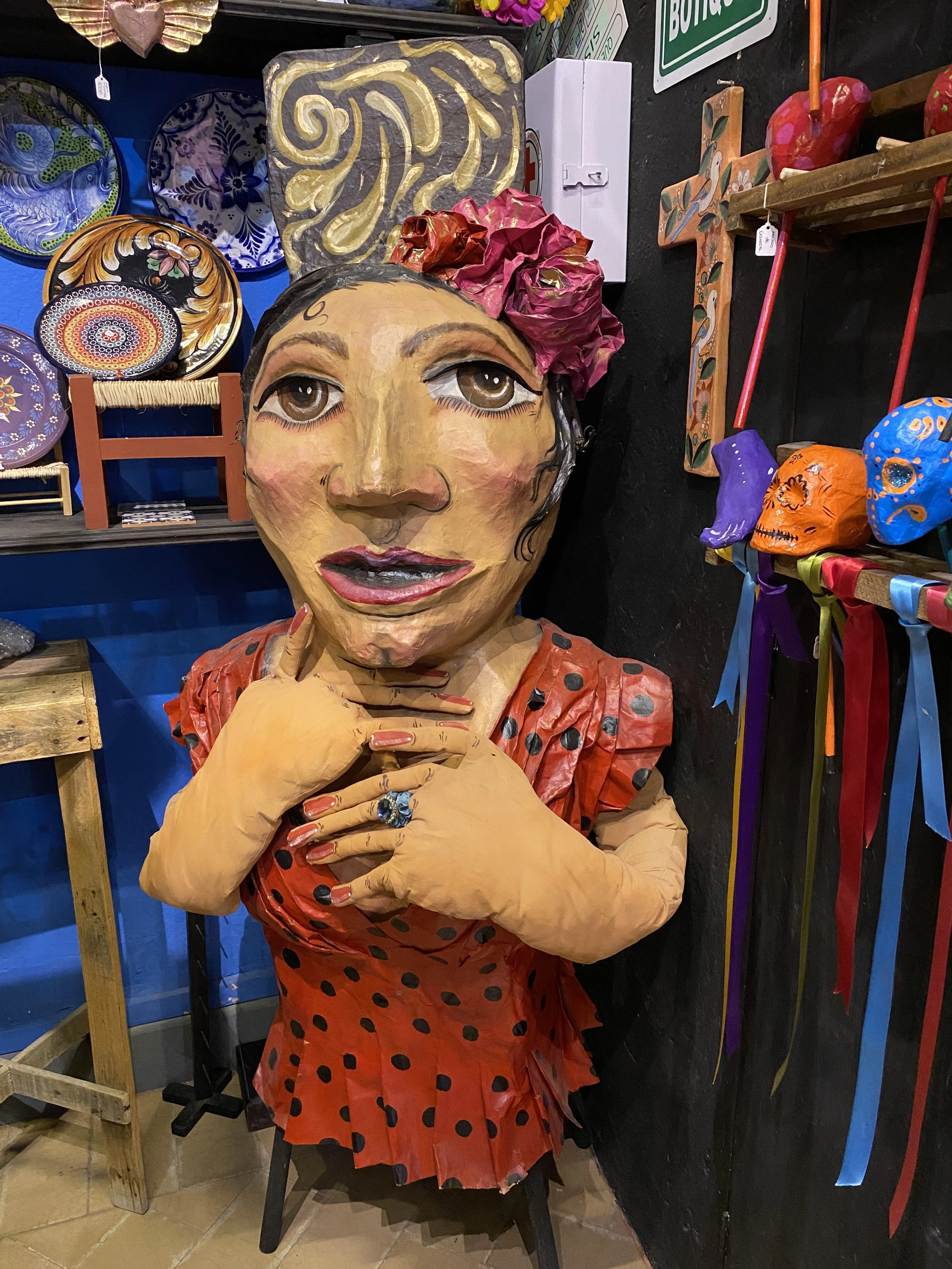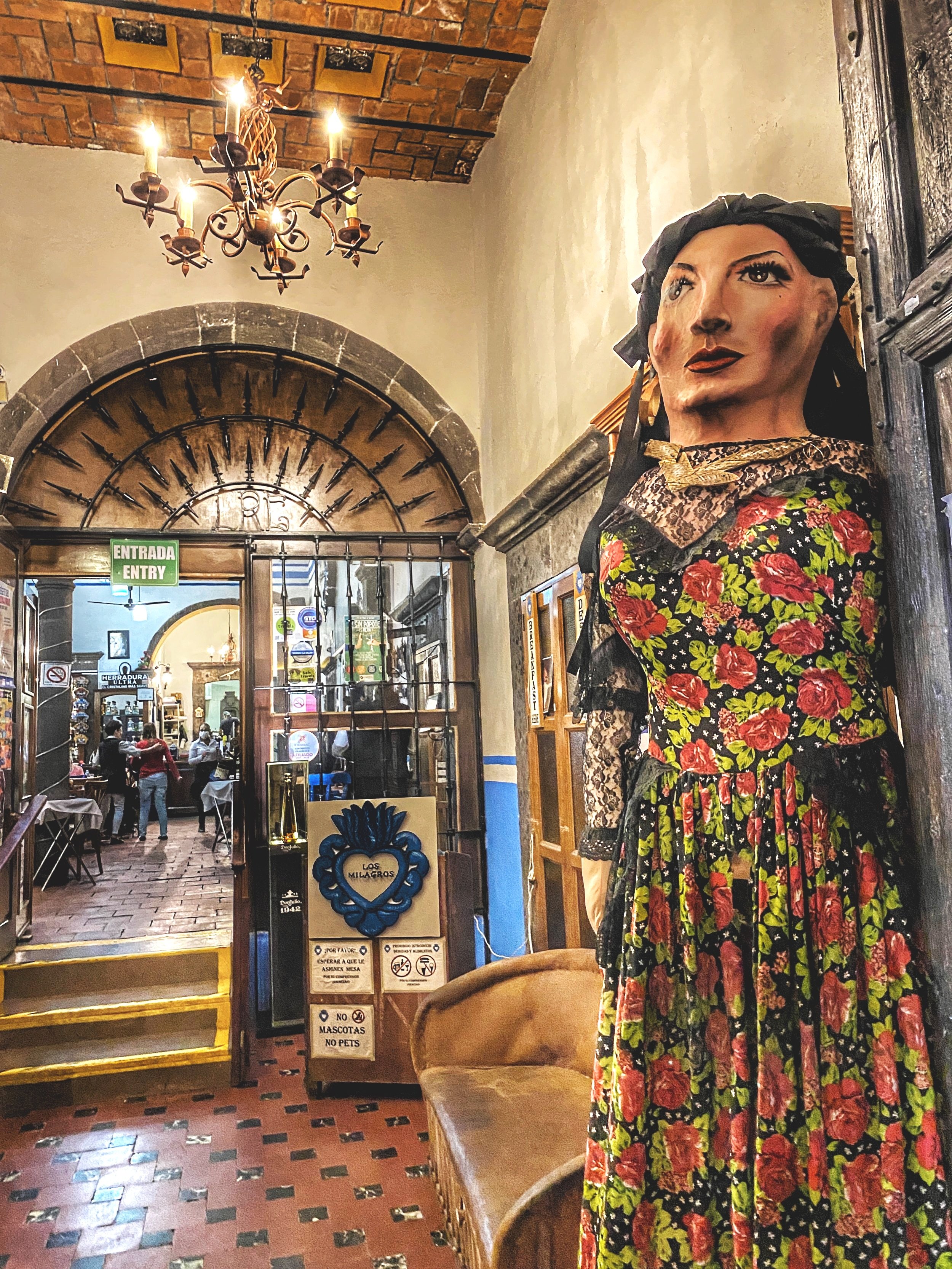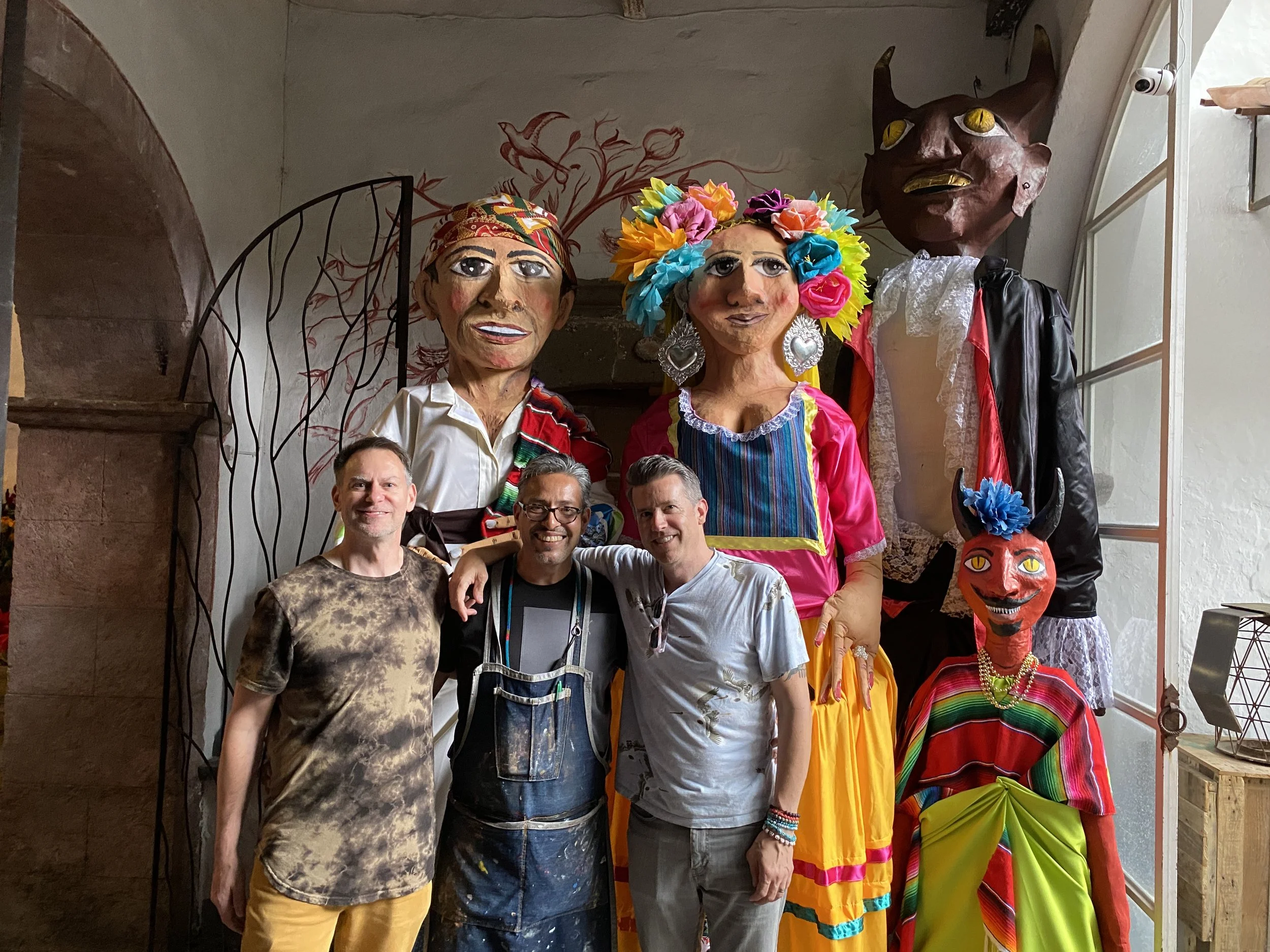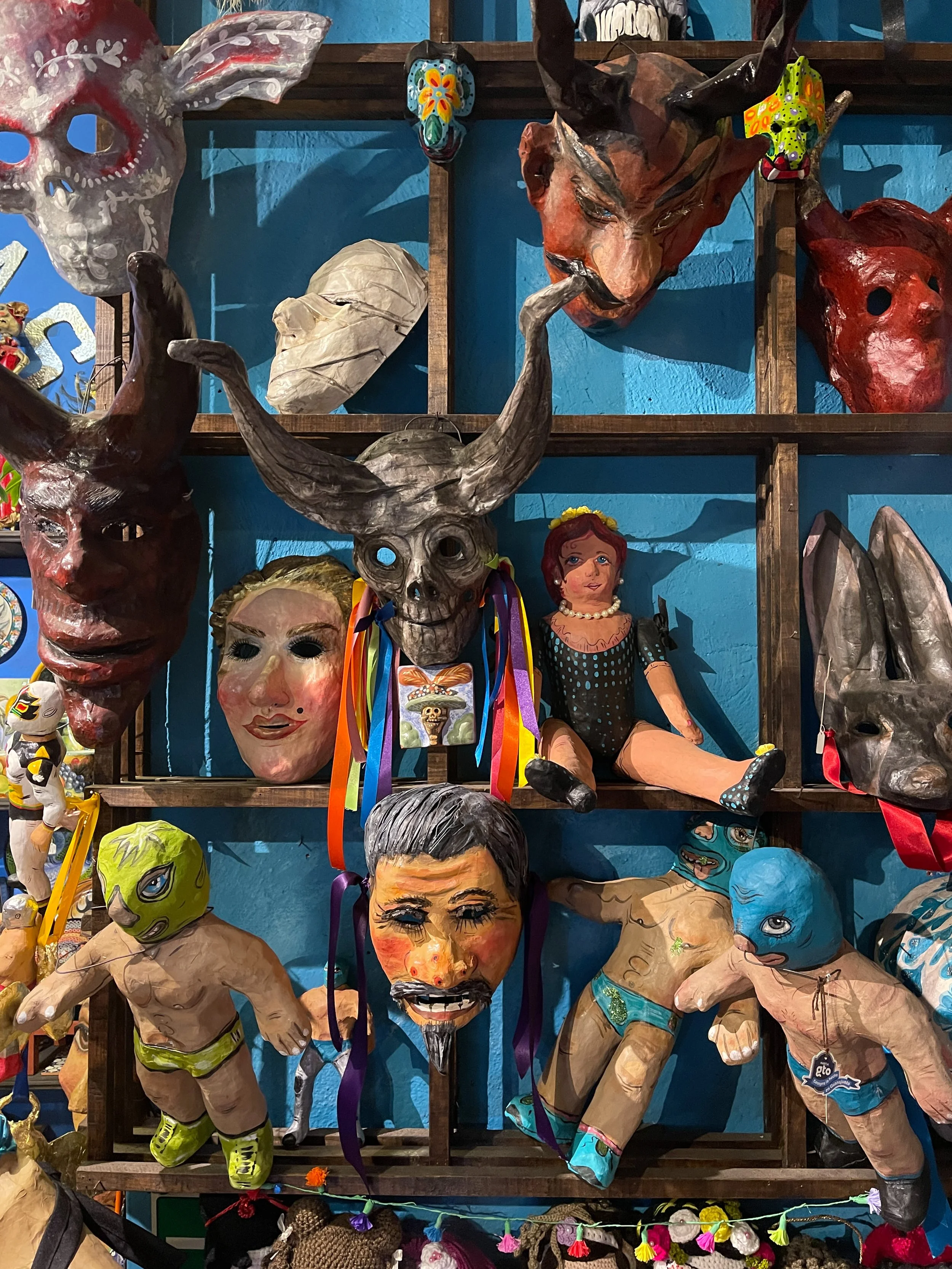From the imagination of Randy Gilson: how this haven of whimsy and reclaimed objects has helped revitalize the Steel City.
Randy Gilson, the mad genius behind the folk art spectacle Randyland
Nestled in the heart of Pittsburgh’s Mexican War Streets neighborhood is the vibrant and colorful landmark known to locals as Randyland. The historic district was developed in the mid 19th century, shortly after the Mexican-American War — which is why its streets are named after battles and generals from the war.
“In 1995 Randy purchased the building on the corner of Jacksonia and Arch Streets for $10,000.
He used his credit card.”
Rubble, rubble: Randy working on Randyland in the ’90s
The History of Randyland
The story began when its imaginative creator, Randy Gilson, moved to the Central Northside neighborhood in the early ’80s. Randy saw the district’s potential, despite its decline, and became a community activist. He started clearing trash and converting city-owned vacant lots into green spaces. Fueled by a singular vision and a knack for repurposing discarded objects into art, Randy embarked on a mission to create a public space that embodied joy and positivity.
In 1995 he purchased the building on the corner of Jacksonia and Arch Streets for $10,000. He used his credit card. But there was no stopping his vision: to transform the space into a haven of creativity. Over the following decades, the whimsical outdoor oasis of Randyland emerged.
When Randy creates his artwork, it looks like he gets as much paint on his pants as he does on the house.
What started as a single house adorned with colorful murals has blossomed into a sprawling art collection. Found objects — everything from plastic pink flamingos to mannequin heads to bottle caps — are given a new lease on life, meticulously incorporated into the ever-evolving landscape. Whimsical sculptures welcome visitors, their painted surfaces reflecting the playful spirit of the place.
Local residents and volunteers rallied behind Randy’s vision, donating materials, time and expertise to help bring Randyland to life. Over the years, Randy has created numerous pieces of art and has planted more than 800 trees and 50 vegetable gardens around Pittsburgh.
Families mill about Randyland during the Mexican War Streets House & Garden Tour.
Bringing Together the Community
Randyland’s artistic style is a delightful combination of folk and outsider art. There’s no adherence to established artistic conventions; the beauty lies in the sheer exuberance and the personal touch evident in every detail. The three-story house itself is a canvas, its bright yellow exterior adorned with fantastical scenes and characters.
The whimsical wonderland of Randyland
But Randyland is more than just a visual spectacle. It’s a space that fosters a sense of community. Randy, with his infectious enthusiasm, is a constant presence, engaging with visitors and sharing the story behind his creation. The museum has become a gathering place for locals and tourists alike, a vibrant counterpoint to the industrial backdrop of Pittsburgh.
Step this way! A cutout of Randy greets visitors to Randyland in Pittsburgh.
The impact of Randyland extends far beyond its physical boundaries. It has played a pivotal role in the cultural revitalization of the North Side, inspiring other institutions such as the Mattress Factory, a contemporary art space, to flourish in the area. And its fame has transcended geographical borders. Randyland had been featured on viral listicles and in a steady stream of social posts, thanks to its numerous photogenic vignettes.
Mac, who sadly passed away, helping his partner, Randy upkeep the attraction. Their hard work has helped revitalize the Mexican War Streets neighborhood.
Not All Rainbows and Unicorns
However, Randyland’s journey hasn’t been without its challenges. The extensive use of found objects means constant maintenance and repair. And the recent passing of Randy’s longtime partner, David “Mac” McDermott, who played a crucial role in the attraction’s operation, left a void.
Yet the spirit of Randyland remains undimmed.
Randy’s work never ends — so while the attraction is free to visit, consider leaving a donation.
Visiting Randyland
The museum is a nonprofit organization, with donations from visitors forming the backbone of its financial support. Volunteers play a vital role in keeping the installations fresh and vibrant. You can also buy Randy’s merch in his store.
The museum is open every day of the week from 10 a.m. until 5:30 p.m. but may be closed during winter due to the weather.
If you’d like to experience the magic of Randyland yourself, find the perfect place to stay. Sites like Cozycozy make it easy to search for accommodations near Randyland and other Pittsburgh attractions, ensuring a comfortable and convenient stay in the Steel City. –Tímea Nguyen
There’s lots of fun, artsy things to buy at the general store.
“Fueled by a singular vision and a knack for repurposing discarded objects into art, Randy embarked on a mission to create a public space that embodied joy and positivity.”
You can’t miss Randyland, a fun activity for kids of all ages.
Randyland
1501 Arch Street
Pittsburgh, Pennsylvania 15212
USA

